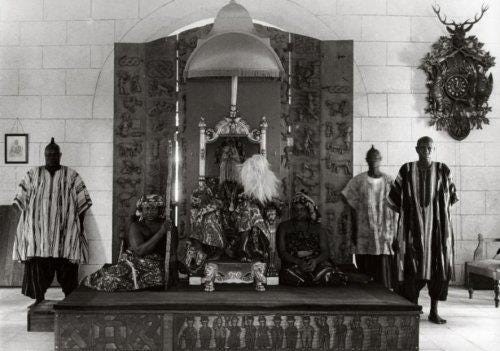Oba Orompoto stands as one of the most remarkable figures in the history of the Oyo Empire, known for her unparalleled bravery, strategic prowess, and a unique story that challenges traditional gender roles. She was the seventh Alaafin of Oyo and the first woman to ascend to this high office, defying conventions and setting a historical precedent that resonates to this day.
Orompoto was the sister of Alaafin Eguguoju, her predecessor. Her path to the throne was unconventional due to the lack of a suitable male successor; the available males in the royal family were deemed too young to rule. The Oyomesi, the kingmakers of Oyo, were initially resistant to crowning a woman as Alaafin. In their view, it was an abomination for a woman to rule the empire, and they were determined to disqualify her.
To challenge her claim, the Oyomesi gave Orompoto an ultimatum: she had seven days to become a man, thereby meeting the traditional criteria for rulership. In response, Orompoto began dressing in male attire, donning the Agbada and fila, symbols of male authority and leadership.
On the seventh day, in a dramatic turn of events, Orompoto unveiled her upper body, revealing a flat chest. However, the Oyomesi were still not convinced, as they argued that some women naturally had flat chests. To dispel any further doubts, Orompoto removed her trousers, and according to oral tradition, displayed male genitalia. This astonishing revelation left the Oyomesi in awe, leading them to immediately proclaim her as Alaafin, with the customary chant of “Kabiyesi” signifying their submission and respect.
Oba Orompoto was notable not only for her gender transformation but also for her formidable prowess as a warrior. During her tenure as a regent and subsequently as Alaafin, she led the Oyo forces in a decisive campaign against the Nupe, who had long been a thorn in the side of the Oyo Empire. Her leadership and military strategy ensured that the Nupe threat was obliterated, securing peace and stability for her people.

Orompoto’s story is significant not only within the context of the Oyo Empire but also in the broader narrative of gender identity and leadership. She is often acclaimed as the first known transgender figure in history, a testament to her courage and the dynamic nature of gender roles. Her moniker, “the custodian of the vagina that thwarts evil plots,” underscores her role as a powerful and protective leader.
Oba Orompoto’s life teaches us many valuable lessons, chief among them the importance of resilience, the breaking of traditional boundaries, and the assertion of one’s identity in the face of opposition. Her story reminds us that leadership and capability are not confined by gender and that true authority comes from strength, wisdom, and the ability to inspire and protect one’s people.
In reflecting on Orompoto’s legacy, we are reminded that no one—man or spirit—should threaten our right to be who we are and to strive for what we believe in. Her courage and defiance continue to inspire, encouraging us to challenge outdated norms and embrace the full spectrum of human potential.
Oba Orompoto’s reign as the Alaafin of Oyo is a profound chapter in history, illustrating the power of transformation, the fluidity of gender roles, and the indomitable spirit of a leader who refused to be constrained by societal expectations.
Sources



